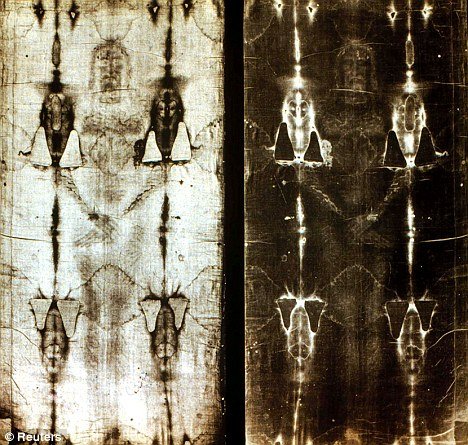Cambridge art historian Thomas de Wesselow came with a new theory about the Turin Shroud, being convinced that it is real and did touch Christ’s body.
Thomas de Wesselow insists that the image on the cloth fooled the Apostles into believing Christ had come back to life, and the Resurrection was in fact an optical illusion. However, his theory about the Turin Shroud claims that Jesus Christ actually rose from the dead.
His theory is that in the mind of a person 2,000 years ago, the image on the Shroud would have been astonishing – far beyond their normal experiences and truly unsettling.
“They saw the image on the cloth as the living double of Jesus,” Thomas de Wesselow said.
“Back then images had a psychological presence, they were seen as part of a separate plain of existence, as having a life of their own.”
“If you think yourself into the whole experience of the apostles. Going into the tomb three days after the crucifixion, in the half-light, and seeing that image emerging from the burial cloth,” the 40-year-old academic told The Daily Telegraph.
According to the Bible, Peter, James, Thomas, Mary Magdalene and a number of disciples saw Jesus in the flesh after his death.
This proved Jesus was the son of God and became the central tenet of Christian faith and theology.
In the New Testament, after the Romans crucified Jesus, He was buried in a tomb, but God raised Him from the dead and he appeared to many people over a span of forty days before his ascension to Heaven.
Christians celebrate the resurrection of Jesus on Easter Sunday, the third day after Good Friday, the day of his crucifixion. The resurrection story appears in more than five locations in the Bible.

But Thomas de Wesselow – a self-confessed “shroudie” who has been intrigued by the its mystery since childhood – has a radically different view.
He has spent eight years on The Sign: The Shroud of Turin and the Secret of the Resurrection, due to be published next Monday.
It is the latest in a long list of works claiming to have solved the riddle of the Turin Shroud.
Many believe the linen cloth was the shroud in which Jesus Christ’s body was buried after it was cut from the crucifix on Calvary, and displays an image of his body.
But debate has raged for decades about its authenticity.
Since a 1988 radiocarbon dating test put its age at between 1260 and 1390, many have just assumed the Shroud, which is held in the Royal Chapel of the Cathedral of Saint John the Baptist in Turin, northern Italy, is a medieval forgery.
But conclusive proof has not yet been advanced.
De Wesselow’s new book claims to prove the botched sampling of the cloth and the last-minute abandonment of agreed procedures mean that the carbon dating test was seriously flawed.
Thomas de Wesselow, who is based in King’s College, Cambridge, believes the Shroud was looted as bounty by French knights and the Crusaders who sacked Constantinople in 1204.
He is convinced modern analysis proves the Shroud is genuine; that pollens lifted from cloth fibres indicate that it was once in Israel; a seam used in the weave of the linen is identical to one found only on a first-century cloth from Judea; the wound-marks are composed of real blood; and an alternative, peer-reviewed test of the age of the linen found that it was over 1300 years old.
He contends that the negative quality of the image also explains why, in the Gospels, the disciples are at first unable to recognize the Risen Jesus.
And he says his version of the Resurrection can be interpreted from passages in the Bible.
He points to Saint Paul’s 1 Corinthians 15-50 in which the Apostle says unequivocally that “resurrection is not about flesh and blood”.
